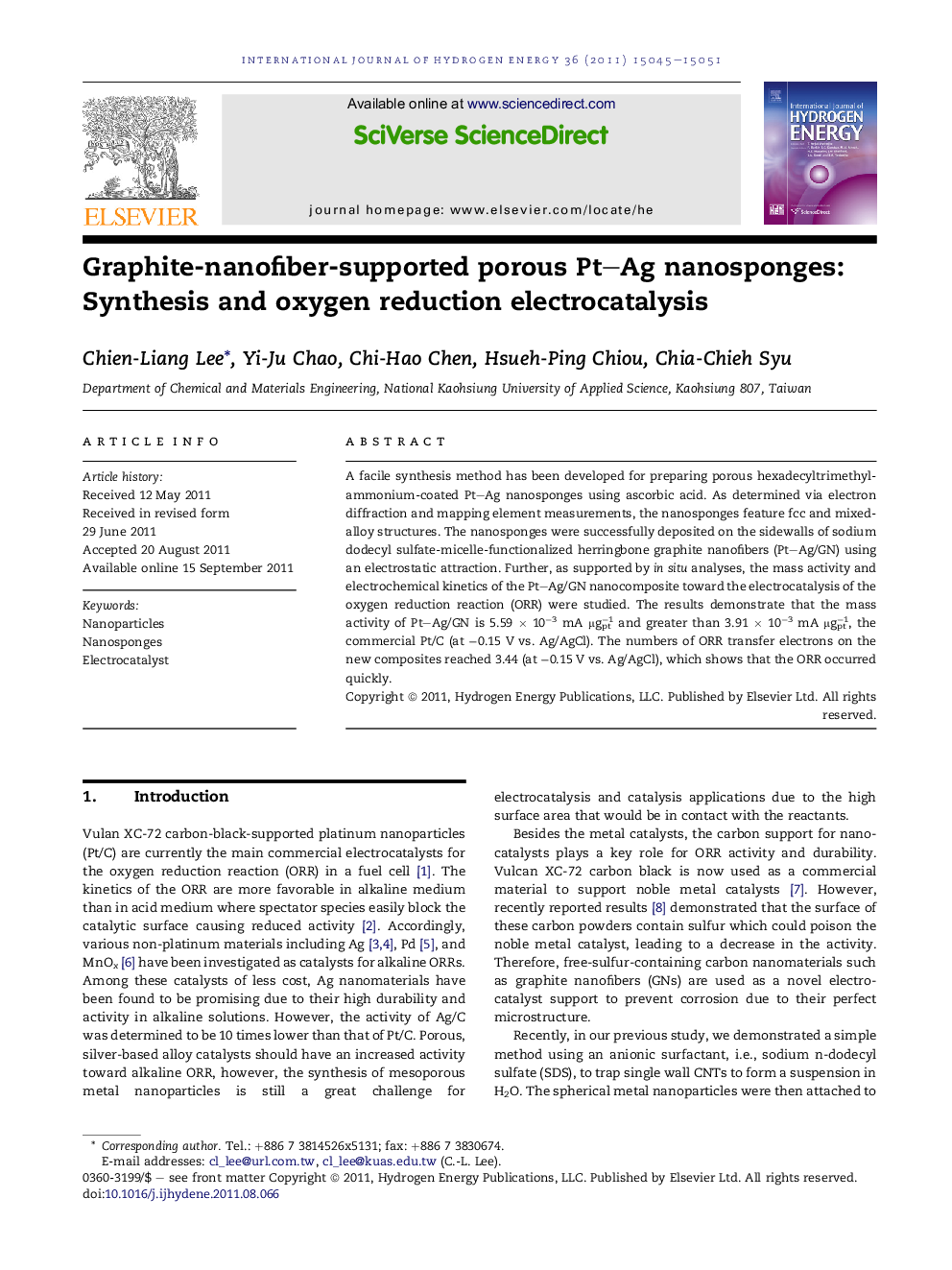| Article ID | Journal | Published Year | Pages | File Type |
|---|---|---|---|---|
| 1271794 | International Journal of Hydrogen Energy | 2011 | 7 Pages |
A facile synthesis method has been developed for preparing porous hexadecyltrimethylammonium-coated Pt–Ag nanosponges using ascorbic acid. As determined via electron diffraction and mapping element measurements, the nanosponges feature fcc and mixed-alloy structures. The nanosponges were successfully deposited on the sidewalls of sodium dodecyl sulfate-micelle-functionalized herringbone graphite nanofibers (Pt–Ag/GN) using an electrostatic attraction. Further, as supported by in situ analyses, the mass activity and electrochemical kinetics of the Pt–Ag/GN nanocomposite toward the electrocatalysis of the oxygen reduction reaction (ORR) were studied. The results demonstrate that the mass activity of Pt–Ag/GN is 5.59 × 10−3 mA μgpt−1 and greater than 3.91 × 10−3 mA μgpt−1, the commercial Pt/C (at −0.15 V vs. Ag/AgCl). The numbers of ORR transfer electrons on the new composites reached 3.44 (at −0.15 V vs. Ag/AgCl), which shows that the ORR occurred quickly.
Graphical abstractFigure optionsDownload full-size imageDownload as PowerPoint slideHighlights► Porous CTA+-coated Pt–Ag nanosponges has been prepared by using ascorbic acid. ► The nanosponges feature fcc and mixed-alloy structures. ► The nanosponges were deposited on graphite nanofibers using an electrostatic attraction. ► The mass activity of Pt–Ag/GN is 1.42 times higher than that of commercial Pt/C. ► The numbers of ORR transfer electrons on the new composites reached 3.44.
